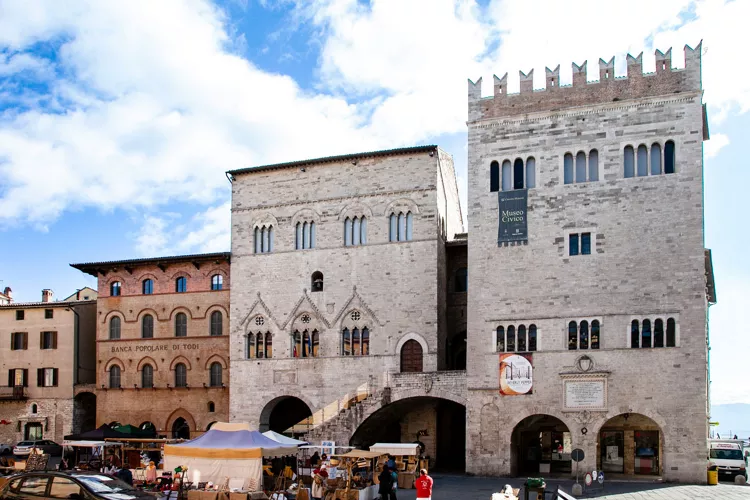
Overview
A town of Umbrian origin, Todi was long in contact with the rich Etruscan civilisation that prospered on the right bank of the Tiber. Its perched position and sturdy walls shielded it from barbarian invasions and it prospered despite the battles of the early Middle Ages.
It experienced continuous struggles against the neighbouring cities of Spoleto, Orvieto and Narni until it became part of the Papal States and an essential point on the path of the Byzantine Corridor, which, for centuries, united the capital with the exarchate territories.
In 1230, Todi was the birthplace of the most iconic religious poet of the 13th century: Jacopone da Todi.
Just before entering the heart of the historical centre is the imposing Church of Santa Maria della Consolazione, begun in 1508 to a design attributed to Bramante, it is one of the highest works of the Renaissance in Umbria.
In the heart of the city is the splendid Piazza del Popolo, overlooked by the palaces of secular and religious power: the Palazzo del Popolo, one of the oldest municipal buildings in Italy, dates back to 1214; the Palazzo del Capitano in Gothic style.
The 12th-century Duomo consecrated to Maria Santissima Annunziata stands at the end of a steep flight of steps and features a stunning central rose window on its façade.
The 13th-century Temple of San Fortunato is also of great artistic value. Constructed in the Umbrian Gothic style, it holds in its crypt the relics of the brother-poet Jacopone da Todi and the town's patron saints: Fortunato, Callisto, Cassiano, Degna and Romana.
06059 Todi PG, Italia